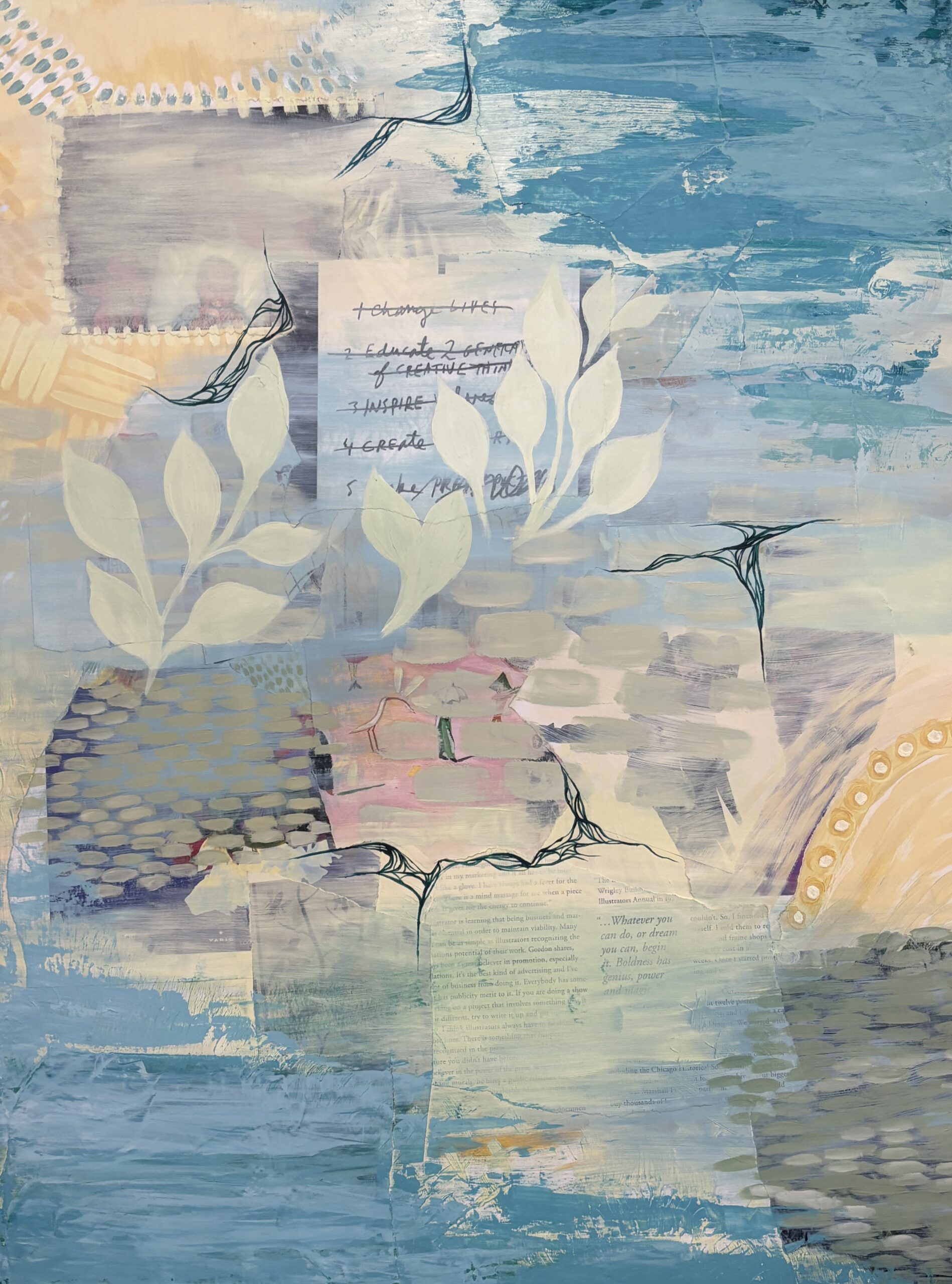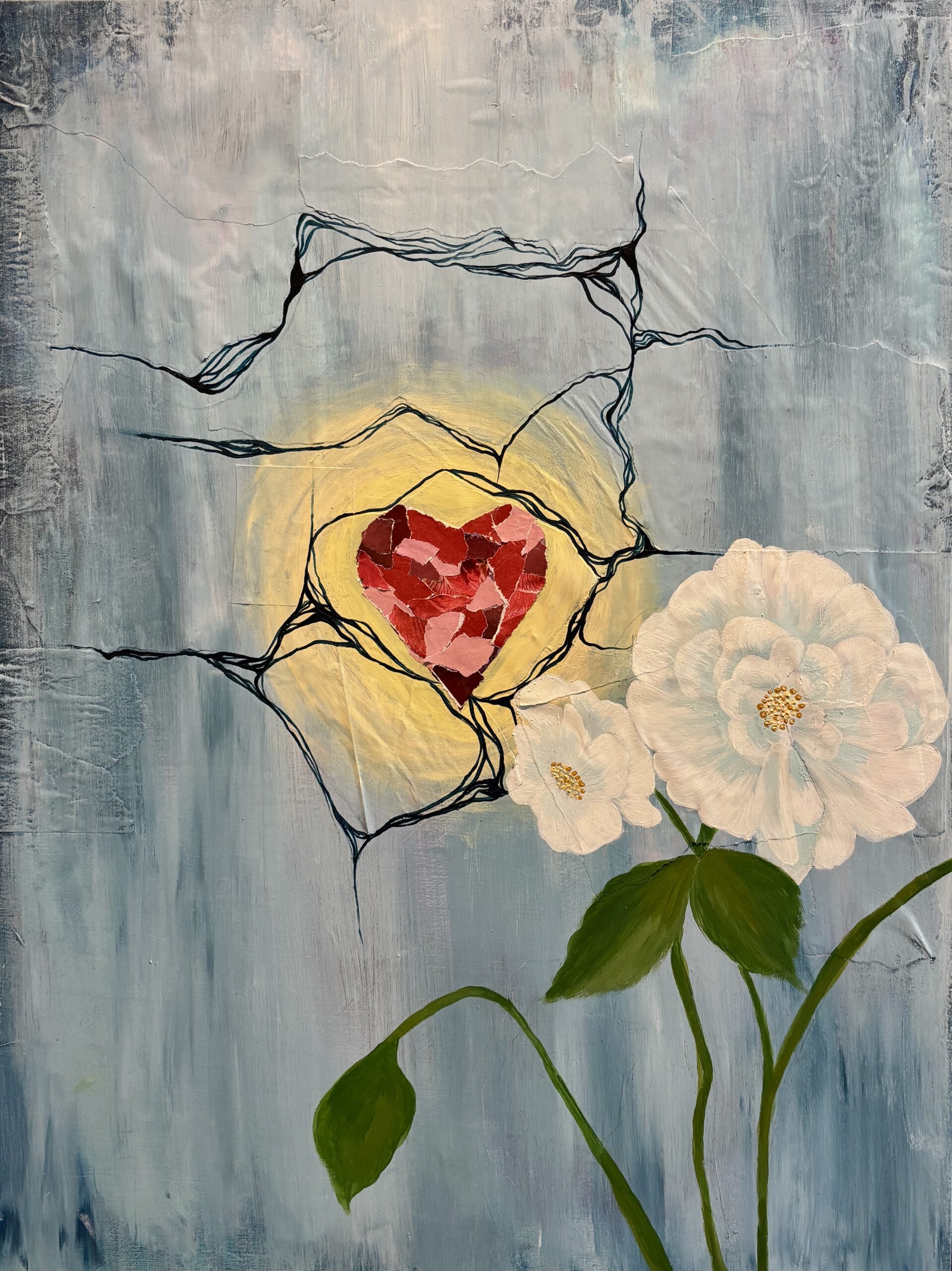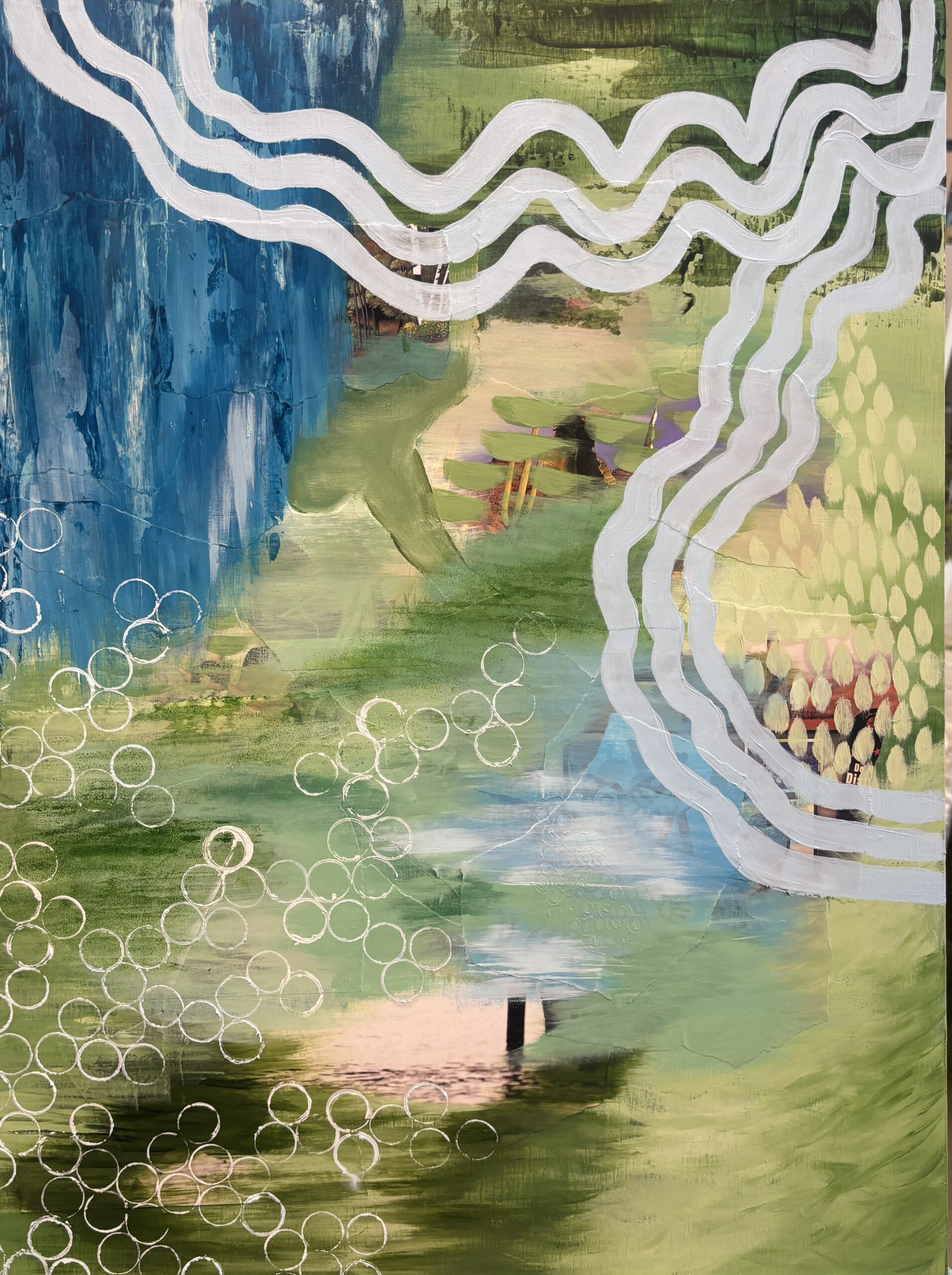Artist Statement
I have always had a love of creating art and caring for others. As a child, I always had art supplies in hand; a paintbrush in my ear, a set of colored pencils in my pocket, and a sketchbook in my hand. I explored my entire world through art. My room continues to be filled with stacks of sketchbooks with images of colorful flowers, people with my latest fashion ideas, including fabric stitched on the page. My work expanded to easels and oil paints, and into the backyard where I painted with sticks and rocks. My younger brother was like my own art students, who I taught the trade of drawing our shadows with chalk on the driveway and making creative designs on our dinner plates. I found early that art led my voice in creative expression, caring for those around me, and my identity. In high school, I worked in a memory loss unit, which inspired my interest in working with older adults; hearing their stories and seeing the smiles on their faces when we made art side by side; they came alive when art-making, hearing an old favorite song, or looking through old photographs touched my heart; and propelled my life’s path in art therapy.
This body of work shows the power of art in stimulating memories, recalling the past, and exploring the layers of our lives. Embedded beneath each of these three el duende style paintings is a photograph from my childhood; memories that are kept in an image from my heart, hidden beneath layers for the viewer. The process of layering and reflecting each day allowed for a new perspective, new details, and a deeper connection to the memory hidden beneath the layers. Often, we strive with our clients to peel back the veneer and come to the core of our issues or concerns; however, this process invites the viewer to consider what lies beneath, what is hidden, and the layers that we add upon our stories to create a new image or a new perspective.
Thesis Abstract
This thesis explores the use of painting and collage as a method to simulate memory enhancement and reduce symptoms associated with dementia. The art therapy method, known as el duende, a process of layering image, paint, and reflecting on a single canvas, was used to consider how one could unlock lost memories for older adults diagnosed with memory dementia. Dementia is a cognitive disorder that affects millions of adults around the globe, impacting memory, mood, and daily functioning. Engaging in art stimulates the senses, activates creativity, and can promote intellectual discourse and conversation. For adults with dementia, art therapy can improve quality of life, reduce behavioral symptoms, enhance self-esteem, and engage memories and connect with past experiences. The method for this thesis began by choosing a personal photo, gluing it to the canvas, and then day by day laying collage and paint layers until the process was complete. As a result, three el duende paintings were created. Each painted canvas is a direct representation of a specific memory in the artist’s life, which evolved layer by layer. The limitations, future directions, and implications for the use of el duende for adults with dementia are discussed.



